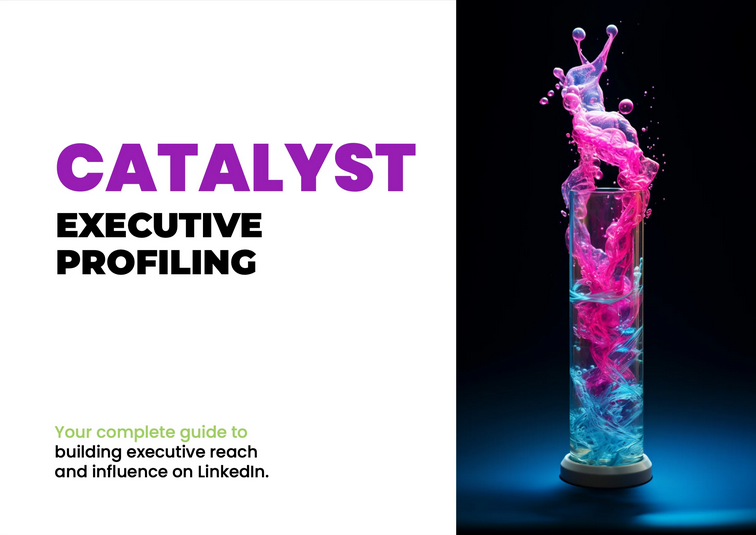
The 7 deadly sins you need to avoid when posting on LinkedIn
Key tips for the best LinkedIn posts
Are you interested in learning the common mistakes LinkedIn users are making in 2024? Discover why you shouldn’t overuse AI but why you should still use emojis and selfies. Learn to balance work-related posts and personal stories while being careful not to overshare. Avoid pitfalls including negativity about previous work places and plagarism.
Ultimately, authenticity and thoughtful engagement are key. Follow this advice to help build a credible and engaging presence on LinkedIn.
As an avid LinkedIn content creator, for both myself and my clients, I love seeing the wide variety of posts on the platform from all sorts of different people.
At EC-PR we offer our Catalyst service – personal branding for the C-Suite – and so I am immersed on a daily basis within the LinkedIn platform.
Many of the posts I come across are thought-provoking, comical or uplifting. I feel I’ve learnt something, or I feel validated by what I’ve seen or read.
I’m left wanting to engage, perhaps leaving a comment, or at the least give the post a like.👍
But I also see a rather large number of posts that should quite possibly never have been published, or at the very least re-read a couple of times for a sanity check.
With that in mind I thought a little exploration of the dos and don’ts of LinkedIn posting might resonate with a few people.
So here are my 7 deadly sins of LinkedIn posting.
Allowing AI to craft the post for you
Now I am not having a jibe at people who use AI to help with a first draft and perhaps get over writer’s block. I understand it and I get why people do it.
BUT what I do hate is when I read something on the platform, especially from people I respect and know have intelligent, distinctive stories and insights to share, that is evidently created by AI from top to bottom.
I don’t want to hear about how something ‘is a chronicle of thoughtful strategy, business acumen, and unwavering faith’. Or that it ‘is a testament to navigating turbulent waters’ or that you are ‘leveraging your insights to skyrocket your standing as a thought leader’.
And if I can tell it is AI-generated, you better believe everyone else can too, meaning your credibility takes a nosedive.
2 Not using emojis or even bullet points
People are suffering from content fatigue.
We’re exposed to so much information daily whether at work, at home, on email, social media and through our interests and hobbies. This can make digesting information hard. It’s important therefore to make it as easy as possible for your posts to cut through the noise.
You can do this by using bullet points, line breaks or emojis. What’s critical is to make your post as easy to digest as possible and that means visually as well as semantically.
No one wants to read reams of boring text, so break it up for the reader and you’ll be glad you did!
3Refusing to take a selfie
LinkedIn’s algorithm is known to prioritise selfies, but I’d wager the reason behind it is because we humans all secretly love a selfie too and so the algorithm is simply providing us with what we want.
Undeniably photos and images help catch the attention of LinkedIn users. And it is human instinct that we’re attracted to photos of people first and foremost.
Selfies improve engagement and help provide insight into the personal side of LinkedIn creators.
The thought of posting photos of yourself on your professional page may strike fear into the heart of many professionals, but there’s no denying they perform better on LinkedIn than any other image type.
Like it or not the humble ‘selfie’ is here to stay.
These images don’t need to have pouty lips or be heavily filtered – in fact it’s best to use unedited images that show the real you. After all, it could get embarrassing if you jump on a call with a prospect and they are left thinking – wow he/she looks different from their profile pic!
Only talking about work
If all you do is post about work and avoid personal anecdotes or stories, you’ll struggle to resonate with the very people you’d like to work with.
It’s that age-old saying, ‘people buy from people’.
Your prospects want to know who you are and gain insight into the breadth and depth of your knowledge and experience.
It’s important that people can see the real you behind the screen or they’ll just switch off to your posts.
Passing off other people’s work as your own
Generally, I think this comes from a place of insecurity, but it is without a doubt one of the biggest sins you can make on LinkedIn.
Passing someone else’s work off as your own makes you look disingenuous, particularly if readers have seen the content before elsewhere or worse – the true author sees their words with your name on them.
It’s plagiarism, pure and simple and will impact your credibility.
Use your own insights and they’ll resonate much better with your audience.
Complaining about former colleagues or workplaces on the platform
This is a huge no-no.
LinkedIn lists your former employers, so just a small amount of digging can expose who you ‘anonymously’ criticised or even worse – if you did name and shame, your entire network could see your post.
This rarely makes anyone look good and you can come across as petty and unprofessional.
It’s also a danger from a legal standpoint – the UK has strong legal protections against defamation for a reason!
Also, don’t forget, LinkedIn remains an incredibly effective recruitment tool.
Headhunters and employers alike often do their research on the platform and coming across posts criticising your previous employer will be a huge red flag. 🚩
What’s to say you won’t bad mouth them in the future?
Always sharing sob stories or too much personal detail
Now this is a tricky one. Absolutely you should feel able to share stories of adversity or challenges you’ve encountered and the ways you have overcome them. This can demonstrate to others, who may be experiencing something similar, that there is a way through or light at the end of the tunnel.
It can give people hope in a difficult situation.
However, limiting your LinkedIn content to personal, inward-looking posts can alienate your audience and cause you to lose followers.
It’s important to remember who your target audience is and to think whether you would want them to know your darkest, deepest secrets!
So there you have it, my 7 deadly sins that you need to avoid when posting on LinkedIn.
If you think you may have accidentally found yourself partaking in one of these sins, then all is not lost! From here on in, embrace your own insights, knowledge and authenticity. No one does what they do quite like you, and there will be people out there who will really value the knowledge you have to share on the platform. And if you’ve read this far… you can always just post a selfie… no words necessary!
10 reasons your CEO 'shouldn't' be on LinkedIn
Watch our experts overcome all the objections in our on-demand webinar.
Plus download our free fast-track guide to LinkedIn.

Discover how we use LinkedIn to grow influence
Our proven, white glove approach to building senior executive reach and influence on LinkedIn.

Fast-track guide to LinkedIn for Leaders

8 ways to optimise your LinkedIn for thought leadership, engagement and brand growth
Our insights
Subscribe to our updates
Stay up to date with the latest insights, case studies and PR guides.


